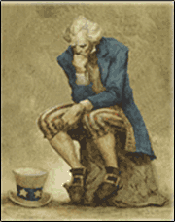The Persian coin flip: What Iran will look like with and without the Iran deal
This article has been prepared based on the opinion of several Iranian economic experts. It does not address whether or not the JCPOA (the Iran deal) will be revived. Instead, it seeks to examine Iran's economic and trade strategies on both fronts.
Scenario: An agreement is reached, reviving the JCPOA.
In the most optimistic case, let's assume that all parties will return to the 2015 JCPOA, favored by the Iranian regime, not the 2021 JCPOA, which the United States and Europe favor. In the 2021 JCPOA, Iran gives up its nuclear weapons and missile development program, ends its interference and influence in the region, and improves the state of human rights. In this scenario, the Iranian regime also signs the FATF.
The revival of the 2015 JCPOA is what Iran's supreme leader, Ali Khamenei, insists on. The Iranian regime is putting a lot of pressure on the international community through its threats to elevate its enriched environment Uranium stockpile and increase its uranium concentration level.
In this optimistic scenario, Iran will be able to sell its oil at a capacity of at least 2.5 million barrels per day as before. The money from these sales, plus a huge amount of Iran's frozen monetary assets, will be handed to the Iranian government. Since Iran's economy is primarily run by the IRGC and institutions affiliated with the supreme leader, profits are the focus, not the needs of the Iranian people. Instead of investing in local manufacturing, goods are imported from China and other countries. In 2016, we saw nationwide demonstrations in more than 160 cities across Iran initiated because of poverty and inflation.
Although temporary economic relief will exist if the JCPOA is reinstituted, the national economy is severely damaged. There is no nationally codified document in Iran identifying priorities with a scientific and program-based approach, given the level of Iran's industrial development technology and roadmap.
Scenario 2: The JCPOA will not be revived, and the pressures of sanctions and increasing international restrictions will continue on Iran.
In this option, the Iranian regime officially withdraws from JCPOA and will try to upgrade its nuclear program as a threat to the world to ensure its survival. Military action is likely from outside sources. Iran's economy, which is currently on the verge of collapse, especially after the coronavirus, faces inflation, and rising unemployment.
Due to international isolation, government-affiliated companies use the government's financial resources and capital without coherent management. Colossal corruption and geopolitical tensions, especially with Israel and internal instability, will continue. Such economic and political instability will repel any foreign investors and will not draw a favorable picture of the Iranian government in the international arena.
What is the current economic situation in Iran?
At present, liquidity in the twelve months to the end of August 2021 has grown by 39.1 percent. Unsupported money is printed to compensate for the budget deficit. In April 2021, Abdul Nasser Hemmati, the former governor of Iran's Central Bank, said: "In 1998 and 1999, parts of the government budget were provided through the foreign exchange revenues of the National Development Fund, which simply means printing money."
Recently, Mr. Aghamohammadi, a manager close to Iran's decision-making circles, presented a report showing that in the last fifty years, the share of productivity in Iran's economic growth has been zero. In many other countries, this share is above 30%. When the percentage of productivity in economic growth stays so low for so long, it means the overall financial structure of the country is in serious trouble. The statistics suggest that much of the country's capital is leaving the country and is unlikely to return.
There has been much news about the size of Iran's economy and Iran's declining GDP that has sparked controversy in recent weeks. According to new World Bank figures, Iran's GDP, about $600 billion in 2012, has dropped by one-third after eight years. Mahmoud Jamsaz said: "We had a lot of oil revenues that if properly managed and the allocation of resources between the real sectors of the economy would happen so that our products would not be wasted, and its production would not be delayed."
He emphasized the primary concern of the people is their livelihood. The current livelihood crisis in Iran results from the policies of the four decades of government rule over the country's economy. The government's monetary, fiscal, and exchange rate policies have put all macroeconomic variables in a bad position. Ignorance of economics has caused the Iranian economy to be ranked very low among the world's economies.
Resolving this situation requires fundamental changes in the political structure. Without this change, the future cannot be built, and political power cannot be sustained without economic power.

Image: Chickenonline via Pixabay, Pixabay License.
To comment, you can find the MeWe post for this article here.





